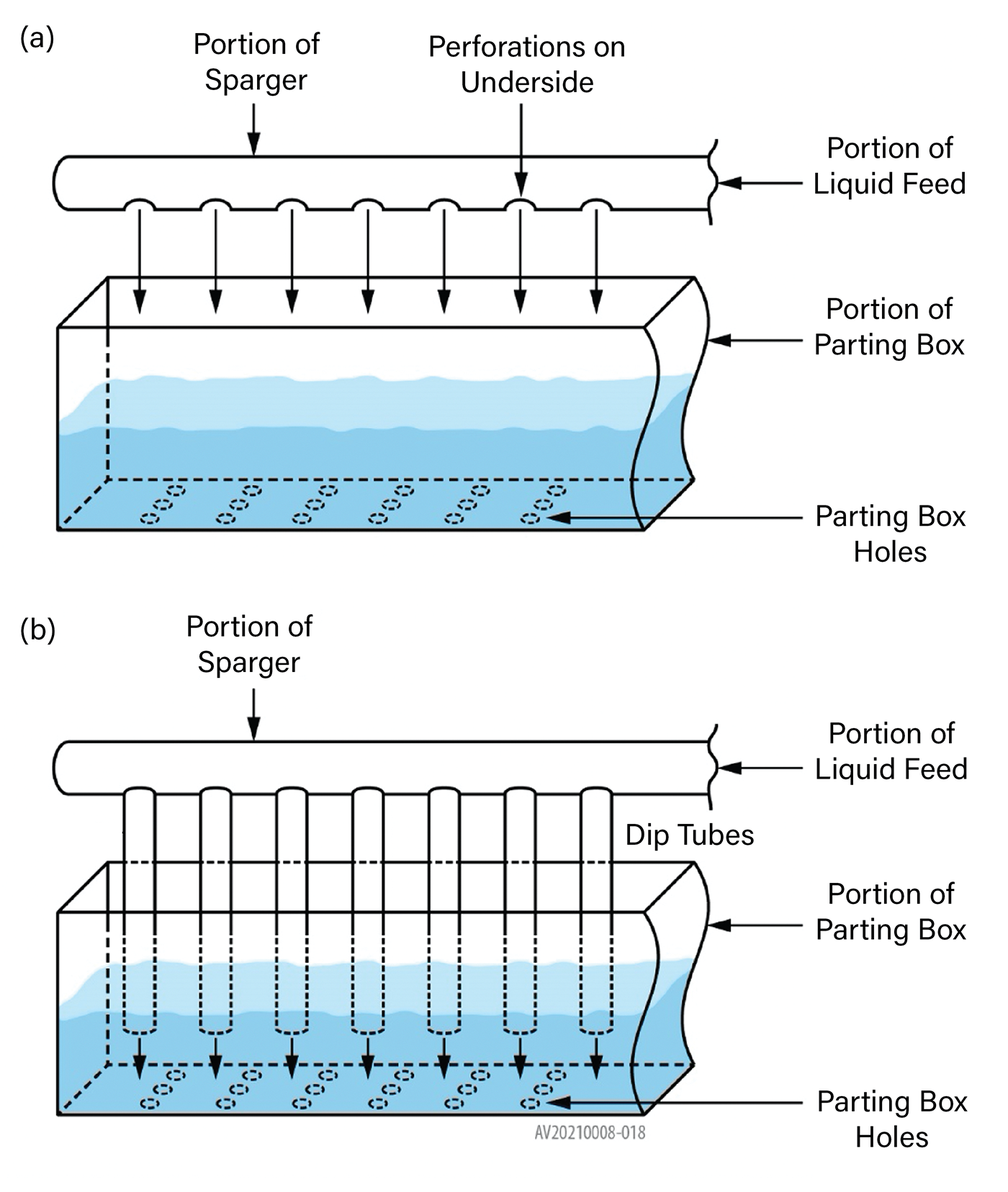Using dip tubes to deliver liquid into a packed tower’s parting box can significantly improve liquid distribution.
Good liquid distribution is crucial for achieving the desired separation in packed towers and multipass trayed towers, as described in Part I of this article (CEP, May 2021, pp. 22–29) (1). Despite the importance of liquid distribution, parting boxes have received little attention in the literature. A parting box is a rectangular box that meters the incoming liquid to the troughs of a trough distributor. Poor metering supplies excess liquid to some troughs, over-irrigating the packed regions below, and starves others of liquid, creating liquid-deficient packed regions.
To gain insight into the parting box performance, we built a scaled-down model, geometrically similar to the parting box in a hydrocarbon tower that we were troubleshooting, and tested it with water. Our testing evolved into an extensive generic study that provided insight into parting box hydraulics. Parts I and II of this article summarize our key findings, explore the mechanisms that govern parting box hydraulics, and develop guidelines for introducing liquid into parting boxes. These guidelines are valuable for designing and troubleshooting parting boxes. (Refs. 2–4 document the detailed results of our tests.)
The two parts of this article reflect the two common feed pipe configurations that transport liquid into parting boxes (Figure 1): perforated sparger pipes and sparger pipes with dip tubes.

▲Figure 1. The two common feed pipe configurations that carry liquid into parting boxes are (a) perforated sparger pipes and (b) sparger pipes with dip tubes.
Part I explored parting boxes fed by perforated sparger pipes. It identified intense uneven frothing — generated when liquid jets from the sparger perforations impact the parting box liquid — as a major issue. Uneven frothing creates liquid head variations that adversely affect the split of liquid through the clusters of perforations in the floor of the parting box at turndown. Additionally, frothing causes extensive aeration of the liquid within the parting box, which generates excessive froth heights, at times overflowing the parting box. To minimize frothing, many parting box designs equip their sparger pipes with dip (or guide) tubes that extend below the liquid level in the parting box (Figure 1b).
This article, Part II, focuses on tests of a parting box fed by a sparger pipe with dip tubes. Our tests found that the key to good performance is to effectively break the momentum of the liquid streams entering the parting box before splitting the liquid to the troughs below. This article discusses practices that successfully achieve this objective and others that fall short.
Would you like to access the complete CEP Article?
No problem. You just have to complete the following steps.
You have completed 0 of 2 steps.
-
Log in
You must be logged in to view this content. Log in now.
-
AIChE Membership
You must be an AIChE member to view this article. Join now.
Copyright Permissions
Would you like to reuse content from CEP Magazine? It’s easy to request permission to reuse content. Simply click here to connect instantly to licensing services, where you can choose from a list of options regarding how you would like to reuse the desired content and complete the transaction.
